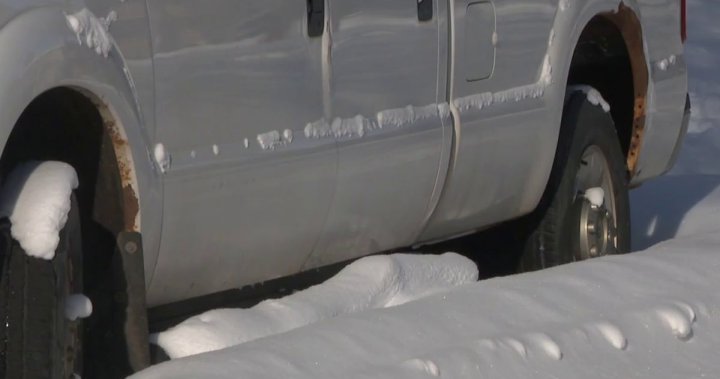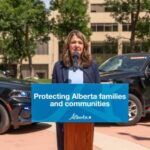As the snow falls harder across Edmonton’s neighbourhoods, city officials are weighing a controversial option that would dramatically change how winter parking bans work: towing vehicles that impede snow clearing operations.
The proposal, discussed during Tuesday’s city council meeting, marks a potential shift from the current fine-based system that many officials consider ineffective at keeping roads clear during critical snow removal periods.
“We’re looking at what tools we can add to our enforcement toolbox,” said Gord Cebryk, deputy city manager of city operations, during his presentation to council. “The current system simply doesn’t create enough compliance to allow our crews to efficiently clear priority routes.”
Edmonton’s winter maintenance program currently relies on parking restrictions during major snowfalls, but compliance remains a persistent challenge. During the last two seasonal parking bans, city data shows roughly 20 percent of vehicles remained parked on designated routes despite restrictions, significantly slowing down snow clearing operations.
Councillor Andrew Knack highlighted the downstream effects of non-compliance, noting that streets with parked vehicles often receive inadequate clearing. “When our plows have to navigate around parked vehicles, we end up with narrower driving lanes and compromised snow removal. It creates safety issues that last for weeks,” Knack said.
The current system issues $100 tickets to violators, generating approximately $1.2 million in fines during the 2023-24 winter season. However, administration officials argue the financial penalty hasn’t created the necessary behaviour change among residents.
Mayor Amarjeet Sohi acknowledged the delicate balance required. “This is about finding the right approach that ensures public safety while recognizing the realities of urban living. Not everyone has a driveway or garage,” Sohi said during the discussion.
The report presented multiple enforcement options, ranging from maintaining the status quo to implementing a full towing program similar to Calgary’s system. The Calgary model, which administration cited as particularly effective, allows immediate removal of vehicles during snow events.
Councillor Tim Cartmell questioned whether Edmonton has the towing capacity to implement such a program. “Do we have enough operators and equipment to make this viable? I’m concerned about creating a policy we can’t properly execute,” Cartmell said.
Administration confirmed challenges exist with towing capacity but suggested a phased approach could work by targeting specific problem areas first.
The financial implications aren’t insignificant. According to budget estimates provided to council, a comprehensive towing program would cost approximately $800,000 annually in additional enforcement and administrative costs. However, proponents argue these costs would be offset by operational savings from more efficient snow clearing.
Community feedback has been mixed. A recent city survey showed 58 percent of residents support stronger enforcement measures, while 32 percent expressed concerns about towing, particularly in neighbourhoods with limited off-street parking options.
Sarah Thompson, president of the Garneau Community League, spoke during the public hearing portion. “Many of our residents simply don’t have alternatives during parking bans. We need solutions that recognize the diversity of Edmonton’s neighbourhoods,” Thompson said.
The city’s administration will now develop a detailed implementation plan with options ranging from maintaining the current approach to phasing in towing capabilities over the next two winter seasons. The report is expected to return to council in September, before the start of the 2024-25 winter season.
For everyday Edmontonians like Mike Cherneski, who lives in a central neighbourhood with limited parking, the potential changes create uncertainty. “I understand they need to clear the roads, but some nights I circle for 20 minutes looking for a spot when there’s a ban. Where are we supposed to go?” Cherneski asked when interviewed near his apartment building.
Councillor Ashley Salvador suggested exploring additional solutions like creating designated overnight parking locations during snow events. “We could look at using school parking lots or other city facilities as temporary options during bans,” Salvador proposed.
As council weighs these options, one thing remains clear: Edmonton’s winter parking system needs improvement. With climate models predicting more frequent extreme weather events, the pressure to find workable solutions will only increase in coming years.
The administration’s final recommendations will need to balance operational efficiency with the practical realities faced by residents across Edmonton’s diverse neighbourhoods – a challenge as complicated as navigating the city’s snow-covered streets.






